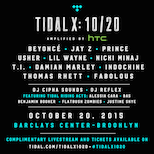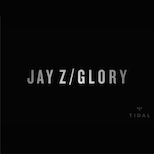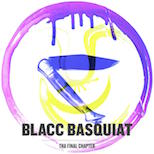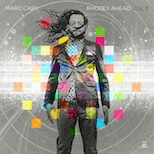Etienne Charles Discusses His Latest Album “Creole Soul” and Music of the Black Diaspora
08.08.2013
MUSIC

The connection between the jazz, blues, soul, hip-hop, and gospel genres has been well-documented. Etienne Charles exemplifies that amalgamation as well as anyone. Hailing from the Trinidad, mastering the trumpet, bringing all of the above together to make great music that stretches beyond one particular genre. Charles is four albums in thus far (he’s also a professor at Michigan St.), but his latest endeavor, Creole Soul (released July 2013), is arguably his most ambitious.
“As a person in the new world, I’ve been influenced by so much music,” says Charles. “And my family has a mixed background, with French Caribbean, Spanish, and African roots, as well as Venezuelan influences. I come from a fusion of rhythms, a fusion of cultures. That’s what this album is all about: focusing on soul music that is Creole at heart.”
Life+Times caught up with Charles to discuss the album and what all music coming from the Black diaspora has in common.
Life+Times: Where did you get the album title from, and what does it mean?
Etienne Charles: Well I wanted to make sure the album made an influence. To me, there’s no other way to say that other than “creole.” We’re all mixed up, we all have different stuff in our system, different blood, so what I wanted to do with the title was showcase that and also showcase the soul which is the feeling of it. That’s where the title came from. It was either gonna be Island Soul or Creole. Then I put the two together.
L+T: And the first song on the record is called “Creole.”
EC: The cut “Creole” is about a journey. I made a trip to Haiti at the beginning of last year and played at the jazz festival in Port Au Prince. Just being blown away by being in a place that you’ve heard a lot about for a long time. I’d been playing Haitian music for a couple years at that point, and finally getting to connect with the motherland of that music was really special. I’ve been to Africa and West Africa before, and to see the similarities between Haiti and the west coast of Africa was really special. So that’s where that tune came from.
L+T: You’ve mentioned that you were trying to convey a lot of different emotions. What sounds match up with those emotions?
EC: Ok, so the emotion of being in a struggle, that’s the sound of that first part of “Creole.” You’re in a new place, you’re looking around, you’re slowly discovering what’s going on and then you start coming up with your opinion. That’s the first part of the tune where the groove sets and then the trumpet starts soloing. The feeling of sunrise or waking up or realizing where you are is when we get to that bridge section where it brightens up, we go to a major key. You realize, “Ok, this is what it is.” You’re no longer confused. And then at the end when it goes back to the first part is when that confusion is demolished.
L+T: With jazz, blues, soul, hip-hop, gospel, etc., how are all of those Black forms of music interrelated? That’s something you seem to be hitting on with this record?
EC: I always talk about this with my friends and my students, as well. When you look at the diaspora and the music of the diaspora, the common denominator is call and response. In the Caribbean countries, you have the Grio, which is like the master, the person that leads the chant. Then that person improvises off the chant. It’s the same thing in the gospel church: you have the preacher or pastor. Same thing in hip-hop, you have the emcee rapping – and again, the hip-hop tradition has strong roots in the Caribbean, as well. DJ Kool Herc, Pete Rock, Heavy D, Q-Tip, Busta Rhymes – who’s one of my personal favorites – all those cats have West Indian roots. That common denominator, is that call and response. A lot of people talk about trying to differentiate Black music, like, “This is jazz, this is R&B, this is hip-hop,” but we’re really talking about the same thing. The artistic sides of them are different: one uses certain types of harmony, another uses certain types of grooves, another uses predominantly just lyrics, but at the end of the day, it’s all about the call and response and the music has to groove.
L+T: Six of the ten songs are original compositions. What was the creative process on those records and what were the contributions you got from the band?
EC: I tend to write based on grooves, so what I normally do – with a tune like “Roots,” for example – is this: I had been listening to Martinique grooves, grooves especially from the French Caribbean, and I had been listening to field recordings. From that, then I sat down with the drums, and immediately I started hearing a bass line. From the bass line – I sang it over and over to figure out the pitch – then I went to piano and started playing the bass line; from there I found the harmony with my right hand. Then after I let the groove set for a little while, the melody came. Same idea for “Creole”. It was all about that congo groove and hearing that groove over and over. The first part of the tune that I wrote is the call and response part, where the horns play, then the solo continues. It was really about African call and response tradition, kind of like what they have in the gospel church. It’s the same tradition. With “The Folks,” I wrote it off of that bass line. From there, I took the harmony, then put the rhythm to it. The last thing I put on was the melody. So I write a tune or have an idea for a tune, then I bring it to the band and they put their own color on it. We might change stuff, like, “Oh, Kris, I like what you’re doing there; I like that chord, let’s use that.” They’re people, they’re not your robots, so you want them to put their color or stamp on it.
L+T: What did you learn and how did you grow as an artist first in the Trinidad, and then in the U.S. studying at schools?
EC: In Trinidad, I picked up a lot of concepts of rhythm. I grew up playing in a huge steel band called Phase 2 Pan Groove – we had to play by memory, there was no written music anywhere so you had to play by ear. Then I played in a couple salsa bands and I played in a rock band. So it was really just about learning how to play with energy, make sure you’re grooving hard, bouncing to the music, making the music bounce as hard as possible. Then I moved to the States, I started out at Florida St. University and I had to learn a lot. I had to learn about technique on the trumpet, harmony, arranging, composition. So that started, then I started trying to blend what I learned in Trinidad with it and when I moved to New York [to go to Julliard], I just did more of it.
L+T: How has your experience been teaching and what impact has it had on your playing?
EC: You learn, when you teach, way more about what you do because you have to be able to explain it to someone. You can’t just do it and show them. It definitely teaches you a lot about explaining, it also shows you why you like what you do because you have to make sure you can convey that and then get somebody else interested in it. I learn so much from my students in respect to what they’re listening to. I always ask them about what they’re listening to. The best teaching is when there’s a steady exchange of information between the student and the teacher. I learn just as much from my students when teaching them as they do.
Click here for Creole Soul and Etienne Charles’ tour.
Photo credit: Laura Ferreira





